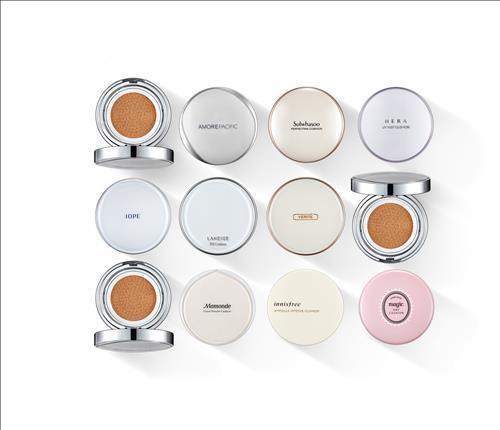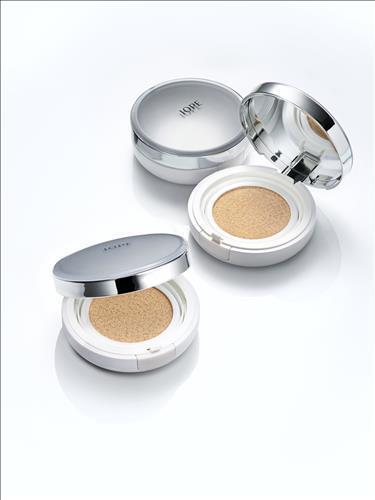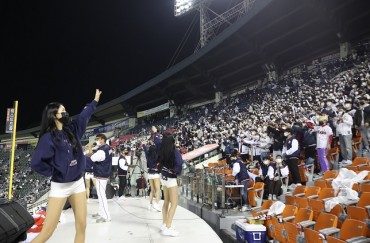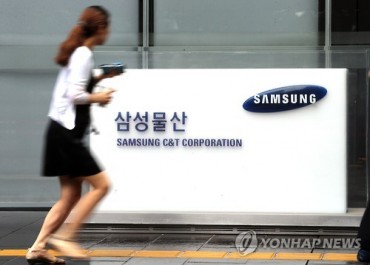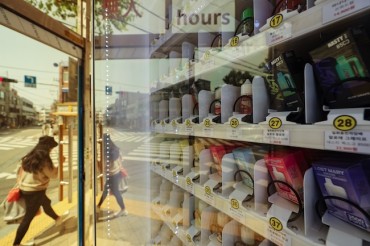SEOUL, Feb. 16 (Korea Bizwire) – Diem Xuan Nguyen was instantly hooked on cushion foundations when a Korean friend of her mother gave one to her last year.
“I love how light it felt, especially in the summer,” said the 27-year-old Vietnamese-American living in Seoul. “Foundations can be like a layer of ganache, but a cushion is like a souffle. The downside is coverage and shade range — not much beyond ‘pale’ and ‘darker pale.’”
In layman’s terms, foundation is the skin-colored makeup that renders your skintone even and complexion smooth. It is quite literally the foundation of makeup, which is believed to start from flawless skin. Liquid, powder and stick are the most common forms.’
A cushion foundation, which is a relatively new form of this item, uses a sponge to dispense the product. It comes in a compact, which typically contains a puff applicator for easy, on-the-go makeup and touch-ups.
Similar products have popped and flopped in the past, like Almay’s Nearly Naked Touch-Pad, which is essentially a cushion foundation that lacks a mirror and an applicator, and Stila’s Pivotal Skin Liquid Makeup, one without an applicator.
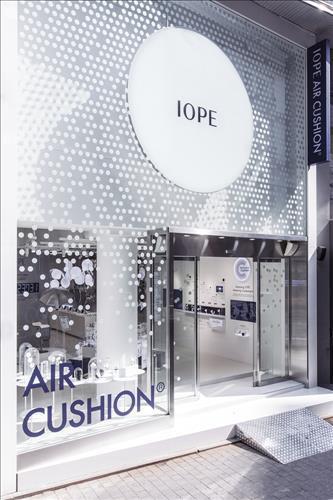
An Iope pop-up store in Myeongdong. Iope is an AmorePacific affiliate that is popular for its cushion foundations. (Image : Yonhap)
But it was AmorePacific, South Korea’s cosmetics giant, that gave it a fresh makeover, and Korean women, notorious for their obsession over all things beauty-related, have turned it into a worldwide fad. AmorePacific says it has sold 33 million cushion foundations in 2015 for a cumulative total of 80 million.
Later this month, a host of foreign luxury brands, including Dior, YSL, Mac, Shu Uemura and Bobbi Brown, will be launching their own take of this invention.
Needless to say, cushion foundations have transformed the way Korean women apply makeup.
Three in four Korean women aged 20-50 have tried a cushion foundation, 80 percent of them having repurchased it, according to a survey by local pollster TNS Korea in January 2015.
Cushions now eclipse BB Creams, tinted moisturizers that also provide sun protection, in popularity; 61 percent of the 20- and 30-somethings in Korea use cushion, compared with 60 percent of BB Cream users in the same age group, the survey also showed.
Despite similar prototypes developed by Almay and Stila, AmorePacific says its ground-breaking Iope Air Cushion XP, released in 2008, was inspired by the way parking lot tickets are stamped at shopping malls in Korea.
Scientists were interested in the way these machines preserved ink for an extended period without leakage or letting it dry, said Brenda Lee, a PR officer at the Korean cosmetics group in an email interview with Yonhap News Agency.
After experimenting with sponges found in furniture, plush toys and bathroom supplies, they determined that porous polyurethane was most effective at holding liquid foundation. The company now boasts a selection of 13 cushion foundations that cater to all ages, skin types and income levels. The upcoming Dior cushion will have been manufactured using AmorePacific’s cushion technology, Lee added.’
Park Soo-hye, a Korean beauty blogger who goes by the alias Ssin on YouTube, says she has tried more than 20 of the cushion foundations available in Korea. A skeptic at first, she now uses them at least three times a week.
“The application is super easy, and your fingers don’t get dirty,” she said, adding she especially prefers them on busy mornings.
In just two years, her channel has grown to 850,000 subscribers. Ssin, who attributes this feat to her slapstick humor and tomboyish personality, says the vast majority of her followers are fellow Koreans, although a growing minority, currently at about 10 percent, is from China, Japan, Southeast Asia and the Americas.
“More people are interested in Korean makeup than before,” she said. “I get more clicks on videos whose titles include words like ‘Korea,’ ‘ulzzang,’ ‘cushion’ and ‘K-pop.’ That’s why I’ve been adding English subtitles to all my videos.”
“Ulzzang” refers to the Korean Internet stars characterized by their anime-sized eyes, pale skin and selfies taken from 45 degrees above, the angle known as the “ulzzang angle.”
A growing interest in K-beauty abroad has encouraged local startups to branch out. Meme Box, which started out as a beauty subscription service in 2012 and has offices in the U.S. and China, is one of them.
“K-beauty isn’t just about products,” said Erin Kim, a PR officer at Meme Box, in an email interview with Yonhap News Agency. “It’s a cultural experience and the origin of trends. That’s what’s been driving consumer spending.”
In just three years, Meme Box membership has grown to 3.6 million worldwide. It became the first South Korean startup to receive investments from Y-Combinator, a top American startup fund, in 2014.
Sheryll Donerson, the author of the beauty blog The Wanderlust Project, says she was initially hesitant to try Korean skincare products when she first arrived here in 2012.
“It was my perception that all products were for lightening your skin and that Korean products wouldn’t be suitable for me since I’m African-American,” she said. “I’ve always been a beauty junkie though, so just the sheer amount of stores made me curious.”
Her first products were SkinFood’s Mandarin and Parsley Toner and Emulsion. Donerson says the multi-step routine has allowed her to focus on herself for a few minutes a day.
“At the time, I didn’t even know what an emulsion was. But within a few weeks, I noticed that my skin started to clear up,” she said, adding that since then, she’s switched to using Korean products almost exclusively.
Nguyen was equally enthusiastic about Koreans’ organized approach to skincare.
“I love having order, and the sequential nature of the Korean routine somehow adds to the glamour of it,” she said. “What woman doesn’t love a little glamour.”
Though one may speculate, Korean products may be cherished for an entirely different reason.
“I know a lot of foreigners, both Asian and non-Asian, that love K-beauty for its emphasis on skincare, first and foremost, and a natural approach to makeup,” she said. “But mostly I think it’s the darling packaging that reels them in.”
(Yonhap)


